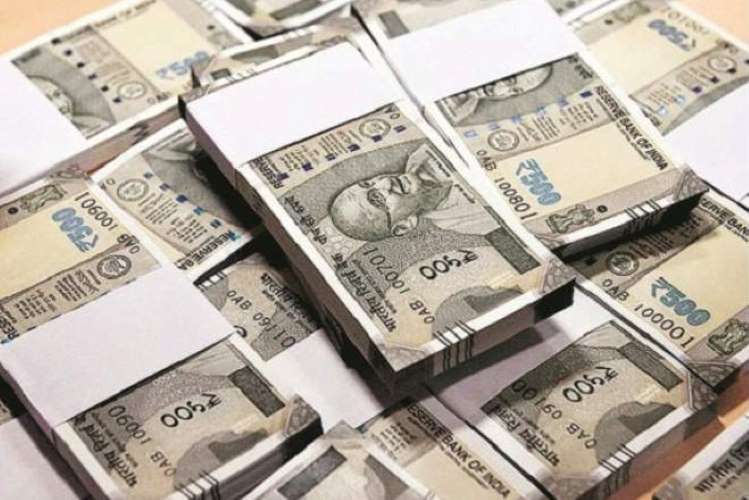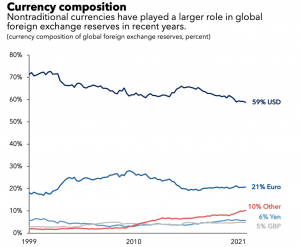
The Reserve Bank of India on Wednesday published a report on the internationalisation of the rupee which offers a roadmap to address the challenges and to take advantage of the opportunities thrown up by the geopolitical tensions. The report gives an overview of the current state of the rupee as a global currency and makes recommendations for further internationalising it.
Internationalisation involves stepping up the use of the Indian currency in global trade and finance flows. The working group, led by RBI Executive Director Radha Shyam Ratho, also recommended the inclusion of the rupee in the Special Drawing Rights basket and a revamp of the rules governing foreign portfolio investments to speed up the globalisation of the rupee. The report emphasised that the rupee has the potential to become a major international currency a India has emerged as a fast-growing major economy.
The report suggests a few ways to promote the use of the rupee in international trade and finance. These include increasing its use in trade invoicing and settlement, promoting it as a reserve currency, facilitating its use in offshore markets, and developing financial products and services denominated in it.
There are several potential benefits from internationalising the rupee. These include:
Increased trade and investment flows: A more widely used currency would make it easier for Indian businesses to trade with other countries and attract foreign investment. This could boost economic growth and create a large number of jobs.
Reduced currency risk for businesses and investors: Businesses and investors would be less exposed to currency risk if they could use the rupee in international transactions. This would make it easier for them to plan their investments.
Increased financial stability: The internationalisation of the rupee would help to increase the depth and liquidity of rupee markets. This would make the rupee a more resilient currency and would help to protect the financial system from shocks.
Enhanced global economic integration: The internationalisation of the rupee would help to integrate India more deeply into the global economy. This will help Indian businesses and consumers by giving them access to a wider range of goods and services available globally.
READ I Digital Personal Data Protection Bill gets Cabinet nod amid privacy concerns
Challenges to rupee globalisation
There are also some challenges that need to be addressed to achieve internationalisation of the rupee. These include:
Volatility in exchange rate: The rupee has been relatively volatile in recent years which can make it difficult for businesses and investors to use the currency in international transactions.
Lack of liquidity in the market: There is a lack of liquidity in market for rupee compared with other major currencies such as the dollar and the euro. This can make it difficult to trade rupee and can also lead to higher transaction costs.
Regulatory barriers: Some countries have restrictions on the use of foreign currencies in trade and finance. This can make it difficult for businesses to use the rupee in these countries.
Despite these challenges, the potential benefits of internationalising the rupee are significant. By addressing the challenges that exist and taking advantage of the opportunities that arise, India can make the rupee a more widely used currency in the global economy.

The internationalisation of the rupee is a long-term process, but it is one that is worth pursuing. The benefits of internationalisation are significant, and the challenges can be overcome. By taking the steps outlined in the RBI’s report, India can make the rupee a more widely used currency and help to boost its economic growth and development. The internationalisation is a complex process with significant benefits. By addressing the challenges and taking advantage of the opportunities, India can make the rupee a widely accepted international currency.
India’s geopolitical moment
The Russia-Ukraine war and the western mistrust on China have created some geopolitical opportunities for the rupee. The war in Ukraine has led to increased uncertainty in the global financial markets, leading to some investors seeking out haven currencies such as the rupee. The war has also prompted some countries to reduce their reliance on the dollar. This could lead to the increased use of the rupee in trade and finance.
The rupee could further benefit from the current geopolitical situation by attracting more foreign investment as investors are looking to diversify their portfolios away from the dollar and the euro. It also needs to promote its exports as the western countries are looking for alternative sources of goods and services.
India should also boost its tourism industry as travellers seek out destinations that are not as affected by the war in Ukraine. The full impact of the current geopolitical situation on the rupee is still unknown. However, the opportunities are significant, and India could position itself as a major player in the global economy if it can take advantage of them.
(This article has been written with artificial intelligence inputs.)
